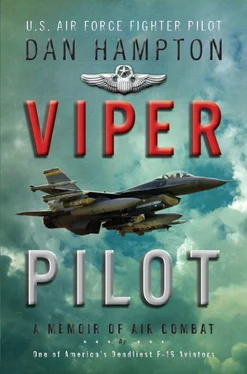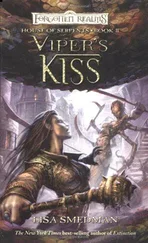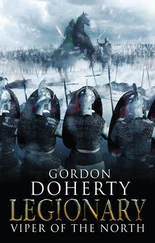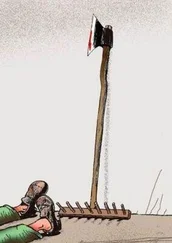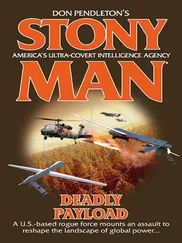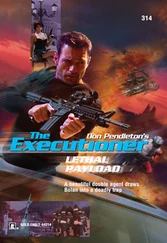U.S. pilots flying strike missions were suddenly faced with a very dangerous and unanticipated air-defense threat. On a summer day in 1965, an event tragically highlighted the enemy’s lethal capacity—and gave birth to the Wild Weasels.
It was to be Captain Ross Fobair’s fifty-fifth and final combat mission before going home. Once more across the line for Fobair, an F-4C Phantom pilot from the 45th Tactical Fighter Squadron, it was now almost routine. The twenty-nine-year-old captain had packed up the night before, and he planned on departing Vietnam after landing from his afternoon mission. The Freedom Bird, a transport aircraft back to the States, was leaving that very night. He was going home to California and a well-deserved rest, a reunion with his wife, Anita, his sister, Betty, and his young nephew, Bruce. It was July 24, 1965.
It was Ross Fobair’s last day.
With him on the mission was Captain Richard “Pops” Keirn, who was flying in the front seat of the Phantom. (Keirn was a retread on his fifth mission in Vietnam. A former bomber pilot from World War II, he’d been shot down over Germany and spent nine months in Stalag Luft 1, courtesy of the Third Reich.) The mission was fairly straightforward. It was a Combat Air Patrol, called a MiGCAP, to protect a strike force of F-105 Thunderchiefs from stray North Vietnamese fighters. The F-105s—or Thuds, as they were known—were hitting a munitions factory at Kang Chi some forty miles west of Hanoi. MiG sweeps were what fighter pilots lived for—essentially, roaming around and looking for trouble. The idea was to force enemy fighters into engaging the Phantoms and thus leaving the Thuds free to drop their bombs. So, the F-105s would smack their target and the F-4s would get to dogfight.
A perfect day.
But it didn’t quite work out that way. Forty miles northeast of Hanoi, over the Vinh Phu Province, a SAM shot up through a soggy cloud deck and hit the Phantom. There hadn’t been time to react, and the F-4C didn’t carry the threat-detection gear that became standard equipment on later jets. Unfortunately for Keirn and Fobair, the previous shoot-downs involved spy planes, so the CIA and the Air Force hadn’t released much useful threat information. Nothing was really known about this new type of threat, and so the pilots hadn’t been trained to defeat it. The missile was the same radar-guided SA-2 that had knocked down Gary Powers and killed Major Anderson. It left little margin for error.
The spine-jarring impact immediately put the Phantom out of control. In the front seat, Pops Keirn struggled to assess the flashing lights, aural warnings, and acrid smoke filling the cockpit. He got no response from the back cockpit. Twisting around against the mounting G-forces, he saw Ross Fobair slumped in his seat, blood streaming from his nose. As the F-4 spun into the clouds, Keirn ejected and would spend the next seven and a half years in the infamous Hanoi Hilton, a POW for the second time.
But Ross Fobair disappeared. Thirty-two years later, his nephew, Bruce Giffin, returned to Vietnam and discovered his uncle’s fate. Near a remote village on the slope of a 4,000-foot mountain, Ross Fobair’s remains were found and finally returned home for a full military funeral.
Answers to a combat death are rarely clear, and finding a meaning, especially in any modern war, is difficult. But this combat loss has a legacy that endures today: Fobair’s death was the final link in the chain that created the Wild Weasels. Many, many lives have been saved over the years because the USAF dedicated men and machines to hunting and killing SAMs. If a meaning can be found in Ross Fobair’s fate, then perhaps this is it.
LESS THAN TWO WEEKS AFTER FOBAIR AND KEIRN WENT DOWN, Air Force officials conducted a secret meeting to arrive at a solution for the new threat. Navy and Marine aircraft were also being lost to the SAMs, and the U.S. military, not just the Air Force, needed aircraft that could kill such a threat. To torment, track, and follow prey into its hiding place just like a fierce and relentless wild weasel.
Project Weasel, also called Wild Weasel One, was born.
But there were problems. First, how do you find a SAM site? Especially when it’s camouflaged or hidden in a jungle? So, Applied Technologies Corporation built the AN/APR-25 radar homing and warning receiver (RHAW) that could locate an SA-2 by the emissions of its own radar. For this to work, the enemy radar, called a Fan Song, had to be operating. The RHAW receiver could see the enemy emissions and would then provide a rough bearing to the site for the attacking aircraft. In theory, anyway.
It worked like this. As a missile gets closer to its target, much more accurate tracking updates are required for the SAM to hit the aircraft. The APR-26 was supposed to detect this shift in guidance beams and trigger a flashing red warning signal light in the cockpit to warn the pilot that a missile was close. An additional receiver, the IR-133, would permit an Electronic Warfare Officer (EWO) to identify specific threats by analyzing the signal. This became more important as more types of SAMs were created, because different threats were defeated by different methods. If you knew what was after you, then you’d know how to beat it—again, theoretically. None of this equipment was really battle-worthy, and everyone, from the scientists down to the aircrews, was feeling their way. The pressure was on, though, since Americans were dying every day.
Another problem was being aware a SAM was tracking you. Threat reactions had always been done visually, but the loss of Fobair and Keirn changed all that. They’d never seen the missile coming and had no warning they were being targeted. Even if they’d spotted it, no one knew how to defeat such a missile and it was obvious that a more sophisticated solution was needed. This new equipment would have to be placed in an aircraft that could survive against a SAM and also employ weapons to kill the things. The Air Force’s answer was to retrofit the AN/APR-26 warning receiver onto a fighter.
But which fighter? You’d need a jet that was very fast and could maneuver well enough to give the pilot or aircrew a chance at survival. Bombers and reconnaissance aircraft could try to rely on jamming and countermeasures, but that wouldn’t cut it for a fighter working right on top of the threat. Especially a jet that was trying to get shot at so the SAM would give away its position.
Pressed for an answer, the Air Force chose the F-100F Super Sabre to accommodate the two-man crew of a pilot and Electronic Warfare Officer. Made by North American Aviation, the Super Sabre was about ten years old when Project Weasel was conceived. Originally a training aircraft, the Super Sabre was only equipped with two 20-mm cannons. In retrospect, it wasn’t an ideal choice, but Project Weasel was making a heroic effort to counter the growing losses in Vietnam, and time was short.
The last problem was, who to fly it? Fighter pilots, as anyone who has ever been involved with them can attest, are a breed apart. The uninitiated or envious often call them arrogant, but that’s not really it . It is an absolute belief in their own invincibility, aggressiveness, and skill. Without this mentality, no sane man would go near a supersonic coffin that flings pieces of high explosive at the ground and other jets.
Fighter pilots regard combat as a challenge, so Project Weasel got to choose from the top aviators already flying the F-100F—but the EWO was another matter. The Air Force had never put EWOs into fighters before, and initially turned to the B-52 bomber community for radar experts. Training started in October 1965, at Eglin Air Force Base, Florida, barely three months following Ross Fobair’s shoot-down.
Читать дальше
